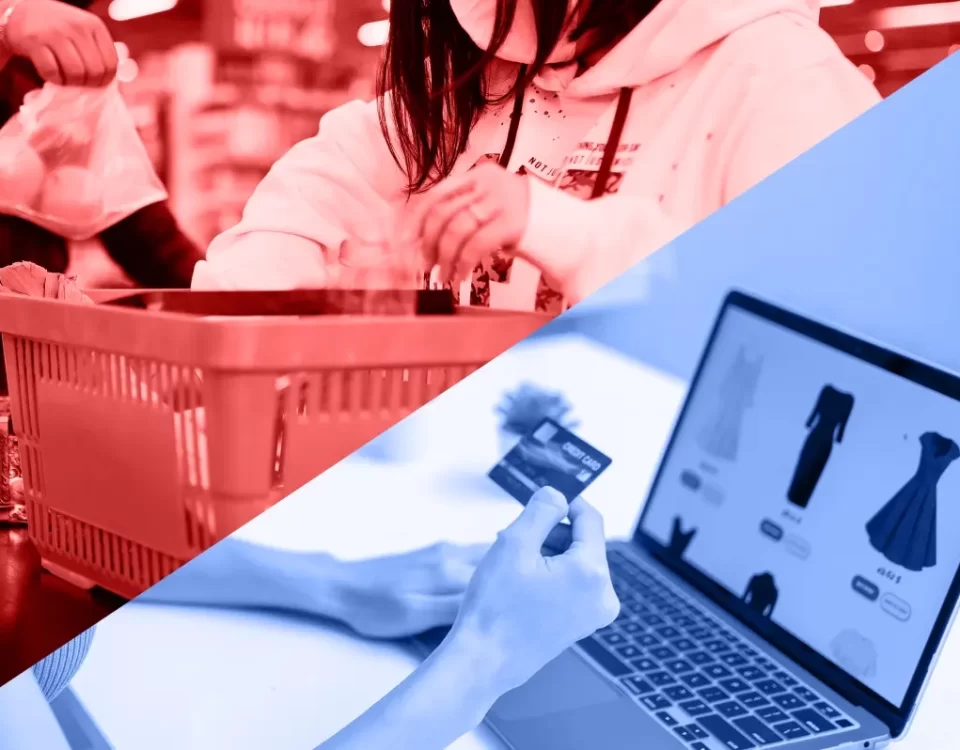A Look at the Future of Shopping: Consumer Trends in 2023

How Gen Z Will Transform the Future of Customer Experience
May 11, 2023The consumer market is rapidly growing, and keeping up with the advanced trends is becoming increasingly important. As we’ve entered 2023, staying informed of the emerging consumer trends transforming the entire retail market is necessary. Knowing what shoppers are looking for and how their choices have changed can help to achieve an edge in this competitive landscape.
Consumer Trends
As society rapidly progresses, so do consumer trends. Thus, it is essential to uncover consumer trends for 2023 to stay ahead of the curve and understand the future of shopping.
Firstly, e-commerce will become more integrated into our lives as technology becomes more advanced and accessible. Consumers are also expected to adopt a more conscious strategy when shopping, look for different brands that meet their needs, and deliver sustainable solutions.
Furthermore, businesses should anticipate a shift towards direct-to-shopper models as customers find convenience and personalization from their trusted brands.
Lastly, shoppers are expected to leverage the latest technologies, such as voice search and virtual reality (VR), when finding products or services online to make better-informed decisions.
In this blog, let’s get to know the most exciting consumer trends for 2023.
Robots and Automation
Robots and automation are revolutionizing the way people shop worldwide. It was predicted that robots would help shoppers decide what to purchase. This shift will enable shoppers to access services faster than ever, but how do these changes impact consumer trends?
In this modern era, consumers are required to be convenient. Online ordering from retailers like Amazon has transformed our expectations of service and speed. However, robots and automation take shopping convenience one step next by delivering shoppers with detailed product information tailored to their specific requirements. AI can now provide personalized recommendations and price comparisons across various retailers.
Online Shopping Boom
The e-commerce industry is booming, and no wonder why. Online shopping has been a game changer for how we do business. With a single tap, shoppers can buy anything from groceries to electronics by sitting at home. This change in consumer behavior has become noticeable, especially after COVID-19.
Personalized Experiences
The future of shopping evolves around personalized experiences. In 2023 and later, consumers will expect tailored and unique shopping tips that cater to their requirements and preferences.
Technology has advanced, and retailers can deliver services such as VR dressing rooms recommending apparel in a person’s size and style. Through data collection, customer service agents can access customers’ older purchases, enabling them to make more precise recommendations for future purchases.
Retailers are adopting the latest technologies that allow consumers to use their phones as wallets, making payments without cash or cards on the premises. Online retailers use AI technology to personalize product recommendations based on each customer’s purchase history and preferences. Consumers will also benefit from increased access through delivery options with quicker turn-around times.
Environmental Consciousness
Environmental consciousness is becoming increasingly important in consumer shopping. This trend is expected to rise in the upcoming years, with more people opting for sustainable and eco-friendly options.
Consumers are becoming more aware of the environmental impact their shopping habits have on the planet and opting for long-term solutions that focus on reducing waste and energy consumption. Companies prioritizing sustainability in their business models will be advantageous as they gain consumer trust by placing a higher value on quality over quantity. Eco-friendly packaging, innovative recycling methods, and renewable energy sources will help businesses stand out.
Digital Payments Evolution
The advancement of digital payments has revolutionized the way consumers shop. From contactless cards to mobile payments, shoppers can buy faster and conveniently. Over the past decade, consumers have adopted digital payment methods. These latest technologies enable shoppers to purchase without cash or cards and offer different features such as personalized deals and rewards programs. As a result, more retailers are offering consumers incentives for using these payment systems.
Power to the People
Today, consumers expect to demand more control over their buying decisions. Shopping experiences encouraging consumers with flexible payment methods, personalization capabilities, and access to a broader range of products are also becoming popular.
According to Mintel’s 2023 Global Consumer Trends study, “Brands need to make room for a new ‘c’ in their c-suite” “This idea goes beyond brands conceding that ‘the consumers are always right’ and is evolving into a model where consumers invest, co-create, and vote on the change.
Me Mentality
Just as significant as giving power to the people, a pretty exciting consumer trend is consumers keen to re-focus on themselves. According to Mintel’s research, brands can help individual consumers “take center stage in upcoming years.”
This trend suggests that consumers want to distinguish themselves from the crowd but may not know how to do so. By acknowledging and celebrating the interests that make consumers unique, brands can give consumers the confidence to try new things and reconsider their identities.
Consumers are prepared for a confidence boost. Brands can deliver this through new experiences or products that feed their curiosity as they form new tastes, routines, and preferences that align with who they are or want to be”, says the study.
Conclusion
In conclusion, staying informed about consumer trends is critical for businesses that want to succeed in the ever-changing retail landscape. As we are into 2023, emerging trends will shape the future of shopping. From prioritizing individualism to embracing sustainable practices, businesses must adapt to these trends to meet the evolving needs of their customers. By understanding and catering to consumer preferences, businesses can thrive in the competitive retail market and provide exceptional shopping experiences to their customers.





